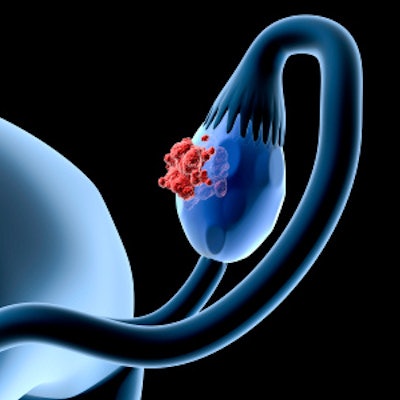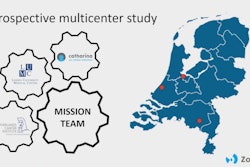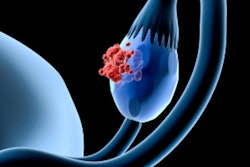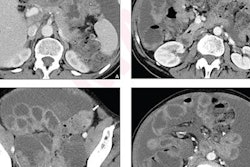
A deep-learning model using CT images can predict neoadjuvant chemotherapy response in high-grade serous ovarian cancer, a study published June 17 in Academic Radiology has found.
A team led by Rui Yin from Tianjin Medical University in China reported that its model achieved high segmentation and accuracy performances for ovarian cancer patients from multiple hospitals.
"Our model could help identify patients most likely to benefit from neoadjuvant chemotherapy, improve personalized treatment and streamline patient care," Yin and colleagues wrote.
While neoadjuvant chemotherapy is a nonsurgical method for treating ovarian cancer, not everyone benefits from it. This makes predicting success important for personalized patient care. Previous studies have suggested that deep-learning performs well with diagnosing tumors and predicting prognosis, including predicting the success of chemotherapy in various parts of the body. Yet there are limited data on deep learning being applied to the automatic segmentation of ovarian cancer and early evaluation of chemotherapy response, the group noted.
The investigators developed a multitask deep-learning model that included a segmentation neural network; these features, along with an integrated classifier, can help identify ovarian cancer as well as predict neoadjuvant chemotherapy response and high-grade serous ovarian cancer, they explained.
They tested their model using data from 757 women with ovarian cancer from three hospitals. Of these, the researchers included a total of 587 women with 1,761 CT images in the training and validation sets. The prospective dataset included 67 women with 201 CT images, and the external sets included 103 women with 309 images. Additionally, the researchers considered peritoneal invasion, retinal invasion, and inguinal lymph node metastasis as independent predictors.
The team found that the model had a high image segmentation performance, with an average Dice similarity coefficient score of 0.83 (range, 0.78 to 0.87).
The team also reported that the model combined with clinical risk factors had high area under the curve (AUC) values when it came to predicting response to chemotherapy.
| Performance of deep learning model for neoadjuvant chemotherapy response, ovarian cancer classification (AUC) | ||||
| Measure | Training set | Validation set | Prospective set | External set |
| Chemotherapy response | 0.87 | 0.88 | 0.86 | 0.79 |
| High-grade serous ovarian cancer classification | 0.91 | 0.89 | 0.8 | 0.8 |
The investigators also noted high positive predictive value (PPV) measures for pathological classification, including a range of 89% to 94%, and high negative predictive values (NPV), with a range of 84% to 95%.
The study authors suggested that, based on their findings, the deep learning model may provide relevant information in the clinical management of ovarian cancer. This includes using alternative treatment methods to chemotherapy to avoid the risk of disease progression.
"New therapeutic modalities such as targeted therapies, including PARP [poly (ADP-ribose) polymerase] inhibitors, antiangiogenic drugs, and immunotherapy have been proposed as an alternative strategy," the authors wrote.
The study can be found here.





















